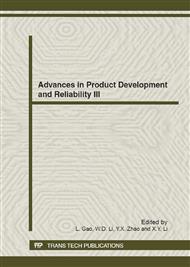p.159
p.164
p.170
p.176
p.182
p.188
p.194
p.200
p.206
Determination of the Critical Plane under the Multiaxial Complex Loading
Abstract:
Engineering components and structures in service are generally subjected to the multiaxial complex loads. The approach of critical plane has been widely accepted by most researchers as the best method in the multiaxial fatigue research field. It can be used well in the constant multiaxial fatigue loads, but not in the complex loads. Basis on analyzing characteristics of shear strain on material planes, the concept of weight-averaged maximum shear strain plane is proposed. A procedure is presented to determine the critical plane under multiaxial random loading. The angle values of the planes that experience peak values of maximum shear strains are averaged by employing the weight function, which is assumed to take into account the main factors of influencing the fatigue behavior, e.g. fatigue damage. The proposed algorithm is applied to the multiaxial in- and out-of-phase experiments to assess the correlation between the weight-averaged maximum shear strain direction and the position of the experimental fatigue crack initiation plane.
Info:
Periodical:
Pages:
182-187
Citation:
Online since:
June 2012
Authors:
Keywords:
Price:
Сopyright:
© 2012 Trans Tech Publications Ltd. All Rights Reserved
Share:
Citation:


